01dragonslayer
Ripped
- Jacked Cash
- 486,991
Alright, listen up bro, I’m here to crush some hopes and dreams.
If you’re not familiar with this commonly used fitness terminology, consider this succinct definition from nutritional wizard and broscientist expert, Alan Aragon:
“Broscience is the predominant brand of reasoning in bodybuilding circles where the anecdotal reports of jacked dudes are considered more credible than scientific research.”
Essentially, it’s any piece of advice that has been handed down each decade from bench happy meatheads to their eager Padawans who have been half squatting since their first day under the bar.
Luckily for you, this article is going to drop the hammer on some of the biggest myths in the fitness industry in order to help you save time, reduce anxiety, and simplify the muscle building process.
News flash, just in case you haven’t kept up with research surrounding physiology and the human body – fasted cardio has no additional benefits to body composition outside of those already found with fed cardio and an ample caloric deficit.[1]
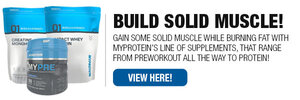
To quote a recent study from Mr. Aragon himself,
“There is evidence that a greater utilization of fat for fuel during a given time period is compensated by a greater carbohydrate utilization later in the day. Hence, fat burning must be considered over the course of days, not on an hour to hour basis, to meaningfully assess its impact on body composition."
Yep, you read that right, the “fat burning zone” marketed on most treadmills and cycle ergometers is nothing more than a misinterpretation of science and human physiology.
No more growling stomachs or moody mornings while you’re trying to get those cardiovascular gains.
In all seriousness though, bros have been trying to jump through the anabolic window ever since the first curl was completed in the squat rack.
We know from research conducted on the subject that the muscle protein synthesis (MPS) response from a mixed macronutrient meal lasts anywhere from 3-4 hours and cannot be re-stimulated due to the refractory nature of circulating amino acids.[2]
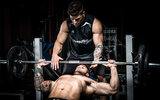
However, it should be noted that carbohydrate utilization is generally higher after exercise given the upregulation of GLUT-4 which functions as a glucose modulator across the cell membrane.
From a physiological standpoint, if you’ve eaten a meal within 60-90 minutes of training, then there is no immediate need to ingest protein after your training session due to the high levels of amino acid availability from previous meals.[2]
In the end, if you choose to train in a fasted state or there is an extraordinarily large gap since your last meal (5+ hours), then it would be wise to ensure you have a fast digesting protein source such as whey.
That being said, if you’re going to dis bodyweight work simply because it’s “uncool”, you should seriously reconsider.
A recent study in the Journal of Strength and Conditioning Research found that pushups performed with resistance from bands had similar EMG values and strength gains compared to the bench press.[3]
Not only that, I’ve written about the unique benefits of pushups for the scapular girdle in this article: Train Like An Athlete, Look Like A Bodybuilder.
Simply put, if you’re neglecting bodyweight movements such as chin-ups, dips, pushups, planks, and various other gymnastic elements then you’re missing out on the big picture.
Not only that, nutrient timing likely only accounts for roughly 20% of the changes seen in body composition.
But, 20% for majoring in minutia is a small price to pay if you have physique related goals.
However, we have to keep in mind that muscle growth and breakdown is not a pulsatile process, it occurs in a continuous fashion. If amino acids aren’t in the GI tract then they will be pulled from the largest cache of aminos (i.e. muscle tissue).
With that last point in mind, I think it’s clear that meal frequency still plays a role.
Carbohydrates directly before a workout can help to delay central nervous system fatigue, improve glycogen stores, and elevate blood glucose.
So, if you’ve hopped on the intermittent fasting or carb backloading band wagon, just make sure that you’ve consumed adequate protein and carbohydrates before your training session or else you’re going to be shortcutting your physique development.

Now personal experience and anecdotal experimentation are generally required in the muscle building process but someone’s level of muscular development doesn’t necessarily determine their understanding of physiology, biomechanics, or periodization.
All too often, we assume that the biggest and strongest guy in the gym knows the most and can help everyone else get bigger, leaner, stronger, and faster.
Sadly, that's not the case.
There are many folks in the gym and on the internet who have merely "thrown crap against a wall and waited to see what stuck". In other words, they may have no idea what worked in their training or nutrition but surprisingly they got lucky.
Others may have been extremely blessed in the genetics department or chose the enhanced route but you can't consider their results "typical" unless you plan to take the same course of action.
I've seen many guys in the gym put up decent numbers in the big 3 despite faulty mechanics and lack of a structured training program. But, if you asked them how they got to that point, most would simply reply with: "Uhhh...work hard?"
I’ve seen my fair share of broscience promoted as fact from popular fitness icons and most believe them simply because of the weight from their social media following.
I'm not discrediting hard work but don't judge a book by its cover.
Besides the general health benefits from steady state work (i.e. insulin sensitivity, reducing cardiovascular risk, improving general work capacity, etc.) in the 120-140BPM range, you have to remember that your aerobic energy system determines your day to day, set to set, and rep to rep recovery.
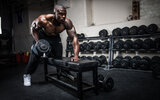
Consider this for a moment as well – if an athlete increases the size of their cross sectional area (i.e. the diameter of their muscle fiber) then they will also increase the absolute amount of metabolic byproducts generated from training.
Steady state aerobic work can enhance peripheral capillary density which in turn can improve the filtration and removal of metabolites created during muscular stress and adaptation.
On top of all that, cardiovascular work can also help to influence nervous system dominance, enhance brain plasticity, and balance neurotransmitters.
Can you get strong without it? Yes, but you could improve your training even further if you stopped ignoring the physiological benefits acquired from ALL energy systems.
Your abs may be weak but learning how to breathe and brace effectively will pay much richer dividends when it comes to core stability and maximal force output.[6] If you struggle with low back pain or maintaining a neutral spine due to a weak core, then refer to this article which will get you straightened out: Ground Based Exercises To Increase Core Strength.
Sit-ups do have a place when it comes to hypertrophic outcomes but the majority of folks already get too much motion in their spine so they would benefit from learning to control a braced position while breathing under load.
The Journal of Strength and Conditioning Research recently conducted a study on isometric versus dynamic core training and found:
“…an isometric training approach was superior in terms of enhancing core stiffness. This is important since increased core stiffness enhances load bearing ability, arrests painful vertebral micromovements, and enhances ballistic distal limb movement.”[5]
In other words, including movements that are isometric in nature (i.e. plank variations, dead bugs, rollouts, loaded carries, etc.) have the greatest carryover to enhancing power production, reducing spinal movement, and improving your ability to handle heavier loads.
Learn to control range of motion isometrically before trying to move through it dynamically.
I’ve written about linear progression schemes before (See here: Daily Undulating Periodization (DUP)) and I think they certainly have their place but the nutritional recommendations that follow them are often short sighted and sometimes outright foolish.
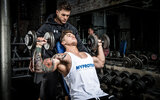
I want to see one GOMAD “transformation” where the end result was a large proportion of muscle mass without excessive fat gain.
Just one.
There’s a reason the vast majority of beginners are put on this sort of nutrition and training regimen: it’s easy and someone doesn’t want to take the time to explain the basics to them.
However, you should keep in mind that not everyone will be able to conventional deadlift and low bar squat on day one.
In fact, in my opinion, there are some folks who should never use the low bar position for squatting due to their anthropometry, injury history, or bony articulations.
If any movement causes pain then you need to find an adequate substitution until your central nervous system establishes control through the entire range of motion.
For deadlifts you could use any of the following variations:
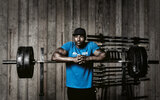
For squats you could use any of the following variations:
Well, whenever you’re ready to simplify your life and make your best gains yet, give this piece a read and learn what science has to say, bro.
If you’re not familiar with this commonly used fitness terminology, consider this succinct definition from nutritional wizard and broscientist expert, Alan Aragon:
“Broscience is the predominant brand of reasoning in bodybuilding circles where the anecdotal reports of jacked dudes are considered more credible than scientific research.”
Essentially, it’s any piece of advice that has been handed down each decade from bench happy meatheads to their eager Padawans who have been half squatting since their first day under the bar.
Luckily for you, this article is going to drop the hammer on some of the biggest myths in the fitness industry in order to help you save time, reduce anxiety, and simplify the muscle building process.
1. Fasted Cardio
Ever since the dawn of the internet, bros everywhere have been waking up with an empty stomach to walk on a treadmill in the hopes that it would somehow help them reach elite levels of body fat while staying anabolic.News flash, just in case you haven’t kept up with research surrounding physiology and the human body – fasted cardio has no additional benefits to body composition outside of those already found with fed cardio and an ample caloric deficit.[1]

To quote a recent study from Mr. Aragon himself,
“There is evidence that a greater utilization of fat for fuel during a given time period is compensated by a greater carbohydrate utilization later in the day. Hence, fat burning must be considered over the course of days, not on an hour to hour basis, to meaningfully assess its impact on body composition."
Yep, you read that right, the “fat burning zone” marketed on most treadmills and cycle ergometers is nothing more than a misinterpretation of science and human physiology.
No more growling stomachs or moody mornings while you’re trying to get those cardiovascular gains.
2. Anabolic Window
If your house doesn’t have anabolic windows installed then you’re missing out. These things are guaranteed to fend off catabolism even in the worst of conditions.In all seriousness though, bros have been trying to jump through the anabolic window ever since the first curl was completed in the squat rack.
We know from research conducted on the subject that the muscle protein synthesis (MPS) response from a mixed macronutrient meal lasts anywhere from 3-4 hours and cannot be re-stimulated due to the refractory nature of circulating amino acids.[2]

However, it should be noted that carbohydrate utilization is generally higher after exercise given the upregulation of GLUT-4 which functions as a glucose modulator across the cell membrane.
From a physiological standpoint, if you’ve eaten a meal within 60-90 minutes of training, then there is no immediate need to ingest protein after your training session due to the high levels of amino acid availability from previous meals.[2]
In the end, if you choose to train in a fasted state or there is an extraordinarily large gap since your last meal (5+ hours), then it would be wise to ensure you have a fast digesting protein source such as whey.
3. Bodyweight Work Isn’t Effective
First thing’s first, your “party pump” likely resembles a deflating balloon animal from my 2-year-old nephew’s birthday party.“Bro, pushups are good for 1 thing – getting a pump before going to the pool or a party. Besides that, they’re relatively pointless.”
That being said, if you’re going to dis bodyweight work simply because it’s “uncool”, you should seriously reconsider.
A recent study in the Journal of Strength and Conditioning Research found that pushups performed with resistance from bands had similar EMG values and strength gains compared to the bench press.[3]
Not only that, I’ve written about the unique benefits of pushups for the scapular girdle in this article: Train Like An Athlete, Look Like A Bodybuilder.
Simply put, if you’re neglecting bodyweight movements such as chin-ups, dips, pushups, planks, and various other gymnastic elements then you’re missing out on the big picture.
4. Meal Frequency
We already know that meal frequency doesn’t have a marked influence on fat loss or thermic effect of food so there’s no point in cramming in 8 meals a day if you don’t want to.[4]Not only that, nutrient timing likely only accounts for roughly 20% of the changes seen in body composition.
But, 20% for majoring in minutia is a small price to pay if you have physique related goals.
However, we have to keep in mind that muscle growth and breakdown is not a pulsatile process, it occurs in a continuous fashion. If amino acids aren’t in the GI tract then they will be pulled from the largest cache of aminos (i.e. muscle tissue).
With that last point in mind, I think it’s clear that meal frequency still plays a role.
Carbohydrates directly before a workout can help to delay central nervous system fatigue, improve glycogen stores, and elevate blood glucose.
So, if you’ve hopped on the intermittent fasting or carb backloading band wagon, just make sure that you’ve consumed adequate protein and carbohydrates before your training session or else you’re going to be shortcutting your physique development.

5. Brawn Equals Brains
There’s a startling trend within the fitness industry. For some reason, the aesthetics of someone’s physique seems to serve as the prediction of their knowledge base to the observer.Now personal experience and anecdotal experimentation are generally required in the muscle building process but someone’s level of muscular development doesn’t necessarily determine their understanding of physiology, biomechanics, or periodization.
All too often, we assume that the biggest and strongest guy in the gym knows the most and can help everyone else get bigger, leaner, stronger, and faster.
Sadly, that's not the case.
There are many folks in the gym and on the internet who have merely "thrown crap against a wall and waited to see what stuck". In other words, they may have no idea what worked in their training or nutrition but surprisingly they got lucky.
Others may have been extremely blessed in the genetics department or chose the enhanced route but you can't consider their results "typical" unless you plan to take the same course of action.
I've seen many guys in the gym put up decent numbers in the big 3 despite faulty mechanics and lack of a structured training program. But, if you asked them how they got to that point, most would simply reply with: "Uhhh...work hard?"
I’ve seen my fair share of broscience promoted as fact from popular fitness icons and most believe them simply because of the weight from their social media following.
I'm not discrediting hard work but don't judge a book by its cover.
6. You Don’t Need to Do Cardio
Before you freak out about losing your gains, just relax. If you can’t handle 1-2 sessions of low intensity steady state work throughout the week then you’ve got bigger issues than your “lack of gains”.“So riddle me this batman, if my only goal is to rival Arnold in his prime and attain biceps the size of softballs, what’s the point of cardio?”
Besides the general health benefits from steady state work (i.e. insulin sensitivity, reducing cardiovascular risk, improving general work capacity, etc.) in the 120-140BPM range, you have to remember that your aerobic energy system determines your day to day, set to set, and rep to rep recovery.

Consider this for a moment as well – if an athlete increases the size of their cross sectional area (i.e. the diameter of their muscle fiber) then they will also increase the absolute amount of metabolic byproducts generated from training.
Steady state aerobic work can enhance peripheral capillary density which in turn can improve the filtration and removal of metabolites created during muscular stress and adaptation.
On top of all that, cardiovascular work can also help to influence nervous system dominance, enhance brain plasticity, and balance neurotransmitters.
Can you get strong without it? Yes, but you could improve your training even further if you stopped ignoring the physiological benefits acquired from ALL energy systems.
7. “Your core is weak, just do some sit-ups.”
Better yet, you should try to “pull your belly button to your spine” and “hollow out” your core.Your abs may be weak but learning how to breathe and brace effectively will pay much richer dividends when it comes to core stability and maximal force output.[6] If you struggle with low back pain or maintaining a neutral spine due to a weak core, then refer to this article which will get you straightened out: Ground Based Exercises To Increase Core Strength.
Sit-ups do have a place when it comes to hypertrophic outcomes but the majority of folks already get too much motion in their spine so they would benefit from learning to control a braced position while breathing under load.
The Journal of Strength and Conditioning Research recently conducted a study on isometric versus dynamic core training and found:
“…an isometric training approach was superior in terms of enhancing core stiffness. This is important since increased core stiffness enhances load bearing ability, arrests painful vertebral micromovements, and enhances ballistic distal limb movement.”[5]
In other words, including movements that are isometric in nature (i.e. plank variations, dead bugs, rollouts, loaded carries, etc.) have the greatest carryover to enhancing power production, reducing spinal movement, and improving your ability to handle heavier loads.
Learn to control range of motion isometrically before trying to move through it dynamically.
8. GOMAD is Extremely Effective for Most Trainees
Lactose discussion aside, I think GOMAD isn’t exactly the best strategy for most trainees who have physique related goals. I’m sure there are a few “internet experts” who will disagree with me and express their opinions via YouTube but that’s beside the point.I’ve written about linear progression schemes before (See here: Daily Undulating Periodization (DUP)) and I think they certainly have their place but the nutritional recommendations that follow them are often short sighted and sometimes outright foolish.

I want to see one GOMAD “transformation” where the end result was a large proportion of muscle mass without excessive fat gain.
Just one.
There’s a reason the vast majority of beginners are put on this sort of nutrition and training regimen: it’s easy and someone doesn’t want to take the time to explain the basics to them.
Don’t let someone else’s laziness be your excuse for excess body fat and lactose intolerance.
9. Everyone NEEDS to squat and deadlift
This isn’t a myth, it’s actually true; you should actively maintain your squat and hinge motor patterns.However, you should keep in mind that not everyone will be able to conventional deadlift and low bar squat on day one.
In fact, in my opinion, there are some folks who should never use the low bar position for squatting due to their anthropometry, injury history, or bony articulations.
If any movement causes pain then you need to find an adequate substitution until your central nervous system establishes control through the entire range of motion.
For deadlifts you could use any of the following variations:
- Rack Pull
- Snatch Grip Rack Pull
- Sumo Deadlift
- Double Kettlebell Sumo Deadlift
- Trap Bar Deadlift
- Romanian Deadlift
- Landmine Romanian Deadlift
- Double Kettlebell Suitcase Deadlift
- Block Pull
- American Deadlift
- Snatch Grip Deadlift

For squats you could use any of the following variations:
- Dumbbell Goblet Squat
- Front Squat
- Landmine Goblet Squat
- Zercher Squat
- Kettlebell Goblet Squat
- Safety Bar Squat
- Double Kettlebell Front Squat
- Sandbag Front Squat
- Belt (Pit Shark) Squat
Broscience or Bust
I know, I know, the article is way too long so you just scrolled through the whole thing while doing fasted cardio or eating your 7th meal of the day.Well, whenever you’re ready to simplify your life and make your best gains yet, give this piece a read and learn what science has to say, bro.

